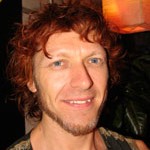Please welcome Rak Razam as GrahamHancock.com Author of the Month for July 2014. Join Rak during July on the AoM Message Boards to discuss his ground breaking work with ayahuasca and the worldwide shamanic resurgence.
What IS ayahuasca, and why is it peaking in Western use now? Is ayahuasca being commoditized by the tourist industry and people making money off this sacred indigenous medicine? Are the plants grooming us for a return to energetic balance (health) within ourselves and with the planet? Can this spiritual movement transform the consumer culture that ayahuasca is spreading through as it leaves the jungle?
These are just some of the questions that I see emerging in the global ayahuasca movement now sweeping the world. We are seeing ayahuasca portrayed more and more often in mainstream news and popular culture but at times it’s getting hard to see the forest from the trees and have any cohesive overview of ayahuasca culture in the West. To really understand what it is and what it is becoming as our culture absorbs it, we are forced to examine deep-rooted questions like what is medicine? What is sickness? What is spirit? And how do all those thing weave together to unify the global ayahuasca community?
Things were a bit more subdued when I first traveled down to the Amazon in July, 2006. I had heard about the jungle medicine ayahuasca: indeed, I was about to attend the 2nd Amazonian Shaman Conference in Iquitos and write up the event as a freelance journalist. I went in search of the mythic archetype of the “shaman” so venerated by the West, with its absence of authentic medicine people, and to understand what this role could play in the 21st century, in a world out of balance, obsessed with materialism, war, greed and the like. What I found was an authentic vegetal medicine that both helped heal the body and cleanse the soul, and its on those deeper spiritual dimensions that a real revolution is happening.
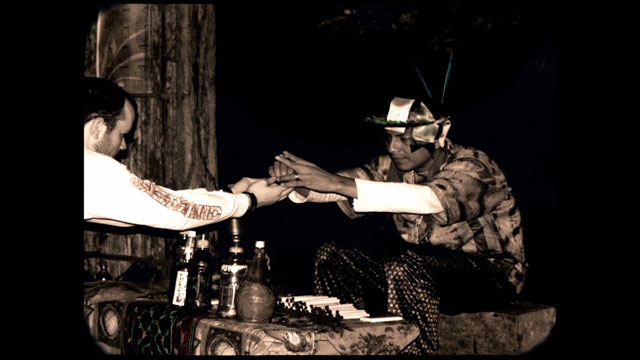
Photo: Curandero Percy Garcia
But what was ayahuasca really like, on the inside? As I quote in the book: “The ayahuasca starts to come on slow, snaking in and out like a lover, tantalizing me. The spirit in the plant is playing hard to get—or, more likely, she’s finding me hard to get. She’s interfacing, overlapping energy fields as her jungle medicine comes on strong. There’s a flash of vibrant green as something starts to happen, as I fall into this target window of curious circuitry-like patterns, lines of energy that are called “ayahuasca rivers.” Locks deep inside me that I never knew were there are tumbling open and I am spilling into the spaces they reveal. Wrapped inside the Mother, she who nurtures and destroys in her endless embrace, all those I love flash before my mind’s eye in a slow-motion emotional retrospective. I feel like I’m being unwound and examined but I’m not sure if this is for me or for the spirit of ayahuasca to get a quick vibrational diagnostic on the patient. I am an open book to her gaze as I circumnavigate these heart spaces and heal the way I feel to each of my loved ones. Then madre ayahuasca shows me bits of myself that lay forgotten or unused, like rooms to a house I’ve lived in all my life but never entered.”
That psychic overview is common to the ayahuasca trance, but not unique to the many levels of healing it can provide. There can be visions, beautiful, miraculous visions, but like the psychic sorting, these are said to be lower level effects on the astral staircase that this “vine of souls” is connecting us to in the higher astral realms and the awareness of multidimensionality. There is, of course, also the purgative aspect of ayahuasca, the diarrhea and vomiting that can be an integral part of the experience, and, conversely, protects it from being something that can be used recreationally.
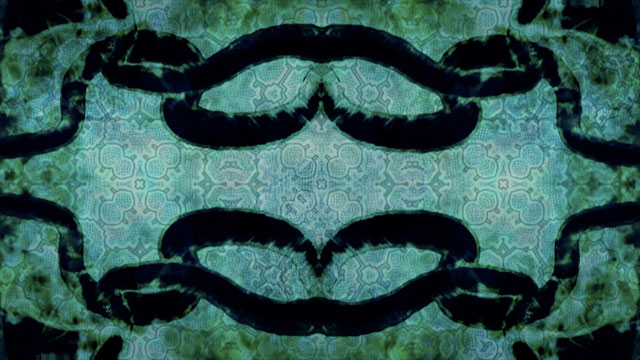
Image: Video still from the film Aya: Awakenings directed by Tim Parish
Still, it is the visions and the emotional connection that most Westerners are seeking. Dr. Jordi Reba has done studies in the West showing that ayahuasca activates the neo-cortex, the reason centers and the amygdala, where emotional and traumatic memories are stored. And as Western psychology knows, by revisiting traumatic imprints in a supportive state we can detach from them and defuse them. This ability of ayahuasca is just one of the healing properties that is propelling the vine front and center into mainstream Western culture, as to a large degree, so many of us have recognized or undetected trauma in our lives from the type of culture will live in.
I recently participated in a MAPS (Multidisciplinary Association of Psychedelic Studies) webinar with Dr. Gabor Mate, a Canadian ayahuasca commentator and a physician who has done an amazing amount of work on the nature of addiction itself. He says that addiction can be defined as “any behavior that has negative consequences that goes on over time that the person craves and relapses into despite those negative consequences.” In this light we can see the many and varied individual addictions in western culture, like drugs, alcohol, cigarettes, sex, power, money, the internet, et.al, are all filling a niche that aches to be filled, and that niche could be called spirit. But is there a larger addiction itself that we can’t see, a gestalt that all these individual addictions point to? Is Western culture itself an unhealthy addiction, by this definition?
Many of the curanderos (from the Spanish “to heal”), the shamans of Peru that I sat ceremony with and interviewed in Aya: Awakenings would probably agree. They were surprised that so many Westerners were coming in search of ayahuasca, and even more surprised that they themselves wanted to drink it (in many parts of South America the shaman drinks the brew on behalf of the patient). Sure, some people came with concrete physical illnesses they wanted healed, or mental or emotional problems they wanted cleared. And that is the repertoire of the curanderos: they work with hundreds or more of medicinal plants and they understand that each one can play a role in the cleansing and rebalancing of the body and soul, and that like the plants, we are–or should be– in a reciprocal relationship with nature.
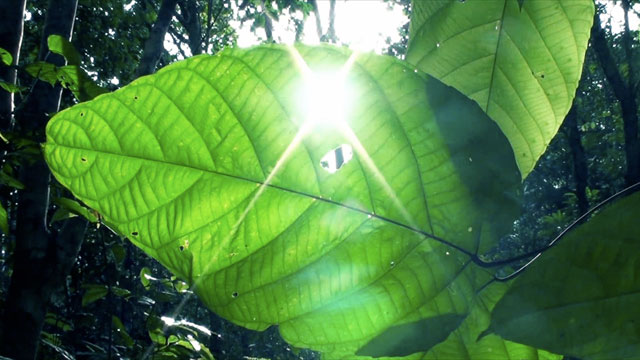
Photo: Video Still from Aya: Awakenings by Tom Askew
In the curanderos’ cosmology, the earth–“pachamama”–is alive and an independent organism that births and feeds us and all the species. Knowing our right relationship in the web of life means taking in the right foods and energy she gives us–and giving back. The jungle is the curanderos’ hospital and medicine chest, it is also the provider in so many ways; and here we must look at the difference in paradigms between the West and the indigenous world. So, many of our physical problems are a result of dis-ease, of diet and imbalance from the natural order. When the curanderos talk of “medicina” they mean more than the chemicals in their plants; they mean there is a spirit in the plants, and it is that relationship they form with the spirits that helps create health or balance.
So when tens of thousands of Westerners started coming in search of ayahuasca–the vast majority with no obvious ailments–the curanderos soon realized there was still a sickness: this one of the soul, a spiritual malaise where people talked of being disconnected from nature, from the whole idea of spirit and spirituality, in any tangible way. That is why the came seeking visions, wanting to see spirits and validate the spiritual world that has long been disconnected from the West. They were filling a burning ache within them for re-connection, which is, of course, what religion means in the original Latin. And by reconnecting with ayahuasca and through it the jungle, the planet and the web of life, many of us have found that intimate remembrance of spirit we were searching for.
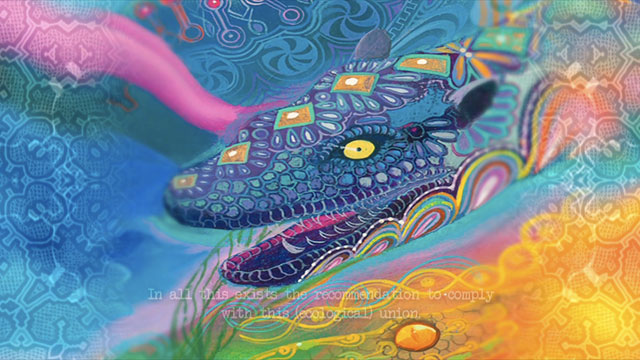
Art: Video Still from Aya: Awakenings art by Anderson Debernardi
So here’s a thought: If Western culture IS the sickness, then we can clearly see ayahuasca moving through it like a virus, healing not just the physical, but the spiritual malaise, as well, working on an emotional level, not just physically. And as she takes root, she’s moving through many modalities simultaneously:
Ayahuasca is in the media–every major periodical has written it up from the New York Times, Time, National Geographic Adventure, to Elle magazine (listed in ‘health and beauty!’) and Marie Claire. Recent celebrities that have used it include Lindsay Lohan and Days Of Our Lives’ actor James Scott, to name just a few. Indigenous icaros have been sampled in electronic dance music (EDM) for many years, but there is an increasing trend now with artists like Grant Chambers and his Liberation Movement and ayahausca hip-hop artist Yuin Huz to incorporate Shipibo icaros and culture into their songs. Renowned Western “Maestro” shaman Hamilton Souther is also launching an ayahuasca-icaro EDM, and paralleling that with what I call “distributed shamanism”, streaming his icaros and ceremony live online every month to a growing net audience.
Ayahuasca artwork and the ‘visionary art movement’ is blossoming, with everyone from the old guard like Pablo Amaringo, Android Jones and Alex Grey to new artists like Anderson Debernardi, Emma Lucy Shaw, Hakan Hasim, and dozens of others, all grounding the deep visionary realm of the vine and entheogenic space into their art. Films like my own Aya: Awakenings, directed by Tim Parish, push the visionary realm into the celluloid, and by doing so anchor the visionary experience so that it can be communicated–and infiltrate our mainstream culture, giving people that haven’t experienced the medicine a glimpse of the shamanic realms.
The one modality that gets the most attention, arguably, is the so-called “spiritual tourism” in Peru and throughout South America. The lodge system has grown rapidly to cater to Western tourists as they tackle the “gringo trail of the soul”, with dozens upon dozens of safe, catered retreat centers to host people. There is a world of money and social politics in the ayahausca tourism scene that is just like any other. For every good lodge there are also less scrupulous individuals out to make a buck, or good willing people that just have less training. Many well known curanderos are now focusing solely on treating tourists in ayahuasca ceremonies over the course of a night, or a few weeks retreat, and that money and power it brings can be a mighty disruptive force socially in these poor countries.
There are also many problems with the culture clash between worlds, and many curanderos seem to have been corrupted by the money and the prestige that the Westerners bring. These are not saints of gurus, but men and women who have dedicated their lives to learning the scared arts of the plants, and of the deeper levels of reality they open. Curanderos war amongst themselves (in Peru this is called brujeria, or negative intent), and as the lucrative tourist dollar is chased, brujeria is spilling over to the Westerners, with reported cases of sexual abuse against women and the like. Occasionally the duty of care within ceremonies and without has been absent, and people have, on rare occasions, died. Ayahuasca itself is non-toxic and non-addictive–it cannot kill you; most reported cases where people are injured come from ceremonies where they are not supported in a safe environment.
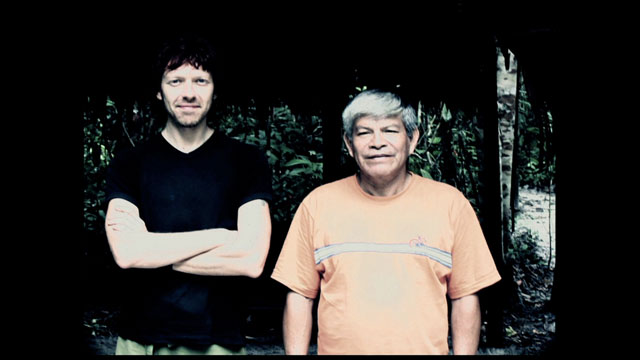
Photo: Rak Razam and Curandero Guillermo Arevalo by John Bowman
This need to ensure a standardized duty of care is paramount in the ayahuasca tourism industry at this time. There have been many calls for a “Union of Shamans” in Peru as there are in other countries, but the task of unionizing is political and to some degree, another example of Westerners projecting their values and politics on the indigenous peoples. Still, organizations like the Enthnobotanical Stewardship Council (ESC) and ICEERS are working to ensure the safe and sustainable use of ayahausca and bring the learnings of fair trade systems to an industry growing rapidly. Word on the street says that the demand even threatens supplies of ayahuasca in the native jungles as the struggle to keep up with tourist and Western export needs increases.
As some of the more established indigenous medicine practitioners travel the world hosting their medicine ceremonies to Westerners all over, the term “rock star shamans” has evolved, and to be fair, some of the same dynamics are in place. Ceremonies can cost hundreds of dollars per person a night, and the expectations of Westerners can still be for the guru or star, with all the same embedded hierarchy and power dynamics that inevitably get corrupted. At the same time there is a generation of medicine people who have discovered the shaman’s path, had their own healing, and found a deeper connection to madre ayahuasca. The traditional archetype of the shaman as village healer is thus being reborn in the West, as shamans for the global village metastasize to heal the sickness in our civilization. Is this a coincidence? I think not.
These Western neo-shamans in large part follow the traditional route: initiation via sickness and recovery, or an innate calling to the medicine. Unlike native curanderos that are groomed from early childhood and work for many decades to perfect their plant and healing knowledge, these new-wave medicine people are just starting out, but they are driven by the need of all of us. The planet is rebalancing herself, tackling the “monkeys out of control” as my friend Dennis McKenna has called it, as the mother brings her errant children back into the fold, back to the garden, the Great Green Web of nature and the intelligence that fuels it.
Underneath the boom in ayahuasca tourism in the West I believe we are re-engaging with the vegetal intelligence in nature and being given a second chance to remember our right relationship with the matrix of life itself. These are still early days, and for all the teething issues that hit the headlines, a great archaic revival is underway, an understanding of the true nature of our reality and what we are embedded in.
This is the true beauty of ayahuasca, and the invitation to become part of this movement is there as the vine reaches out to embrace the world.
My initial journey to Peru is chronicled in the book Aya: Awakenings: A Shamanic Odyssey and the companion volume, The Ayahausca Sessions: Conversations with Amazonian Curanderos and Western Shamans, now a feature length visionary documentary available for viewing and download on Vimeo on Demand: https://vimeo.com/ondemand/ayaawakenings . You can host your own public screening of the film, see: http://www.aya-awakenings.com/screenings and join the discussion on our Facebook page: www.facebook.com/AyaAwakenings
Rak Razam is the world’s leading ‘experiential’ journalist, writing about and helping shape the emergence of a new cultural paradigm in the 21st century.
Author of the critically acclaimed book Aya Awakenings: A Shamanic Odyssey and the companion volume of interviews, The Ayahuasca Sessions (www.ayathebook.com), he is a frequent lecturer on ayahuasca and the shamanic revival sweeping the West. He wrote, produced and co-directed the groundbreaking new visionary documentary Aya: Awakenings (www.aya-awakenings.com) that toured across 10 cities in the USA in early 2014.
He has been hosting dynamic speaking engagements, panel facilitation and lectures across Australia and North America at conferences, transformational festivals and other events for the past five years, weaving together the New Age, counter-culture and progressive thought. He has been called one of the “leading spokespersons for the new paradigm”.
His video interviews for website Reality Sandwich, New MAPS of Hyperspace, (http://vimeo.com/album/1688275) feature Sasha Shulgin, Alex Grey, Stan Grof, Rick Doblin, Ralph Metzner, Mountain Girl, and more luminaries, as do his interviews with ayahuasca experts, Awakenings, (https://www.youtube.com/playlist?list=PLb3lNZCb4bKiH94yqz45xONBNi3xNzE6k). A prolific media maker and networker, he hosts a popular podcast show In a Perfect World (http://in-a-perfect-world.podomatic.com).
Rak Razam is available for interviews and freelance hire, and can be contacted via his website:





